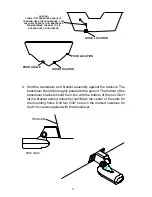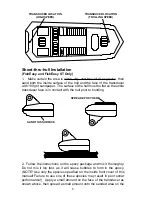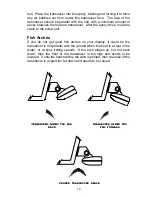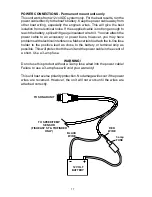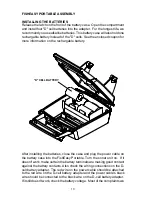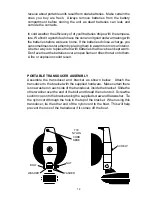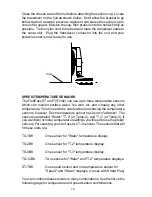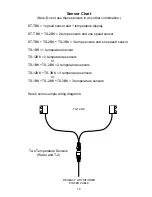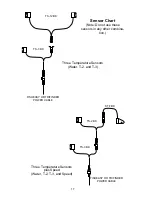
2
Transducer Installation
The transducer included with your sonar is a transom mount transducer
The “kick-up” mounting bracket helps prevent damage if the transducer
strikes an object while the boat is moving. If the transducer does “kick-
up”, the bracket can easily be pushed back in place without tools.
Read this manual carefully before attempting the installation. Determine
which of the mounting positions is right for your boat. Use extreme care
if mounting the transducer inside the hull, since once it is epoxied into
position, the transducer usually cannot be removed. Remember, the
transducer location is the most critical part of a sonar installation.
Location - General
1. The transducer must be placed in a location that has a smooth flow of
water at all times. If the transducer is to be mounted inside the hull,
then the chosen location must be in the water at all times. If the
transducer is not placed in a smooth flow of water, interference will
show on the sonar’s display in the form of random lines or dots
whenever the boat is moving.
2. The transducer should be installed with it’s face pointing straight
down, if possible.
3. If the transducer is mounted on the transom, make certain it doesn’t
interfere with the trailer or hauling of the boat. Also, don’t mount it
closer than approximately one foot from the engine’s lower unit. This
will prevent cavitation interference with the propeller. Typically, the
transducer should be mounted as deep in the water as possible. This
increases the chance that it will be in the water in high speed and
reduces the possiblity of air bubble interference.
4. If possible, route the transducer cable away from other wiring on the
boat. Electrical noise from engine wiring, bilge pumps, and areators
can be displayed on the sonar’s screen. Use caution when routing
the transducer cable around these wires.







